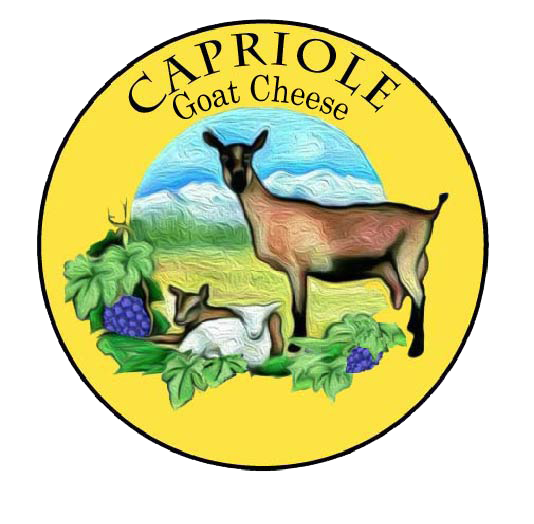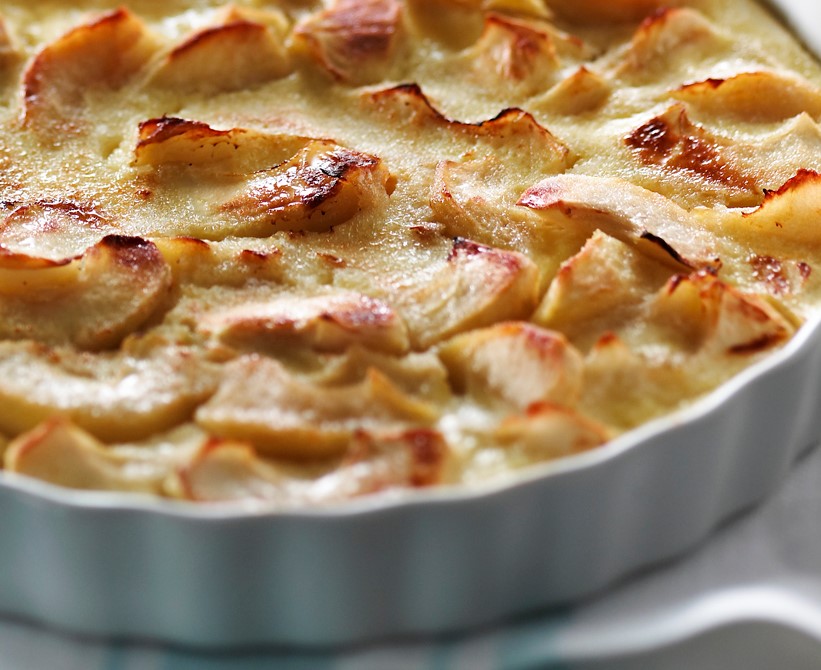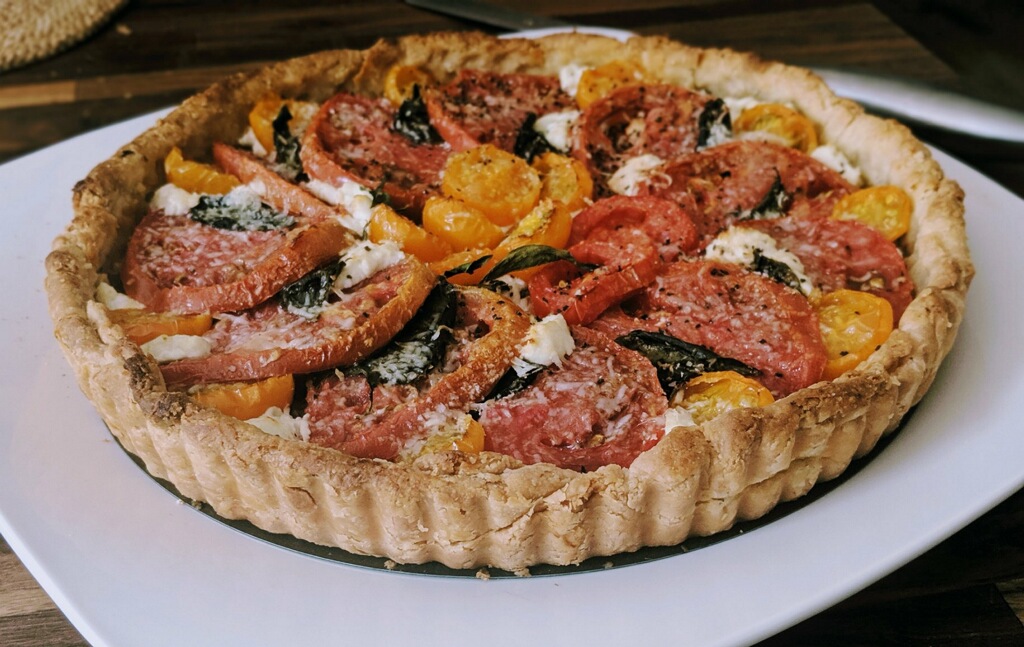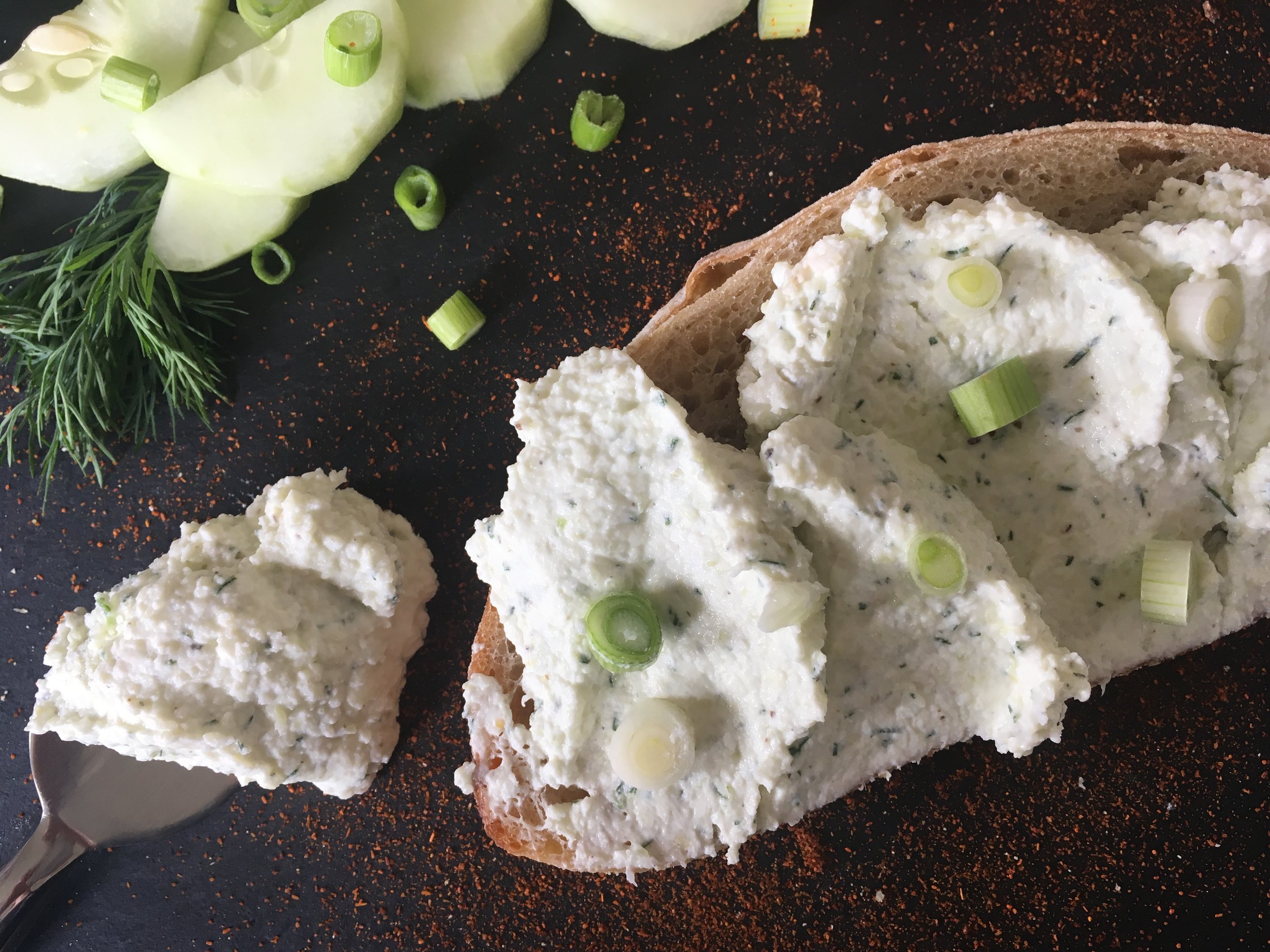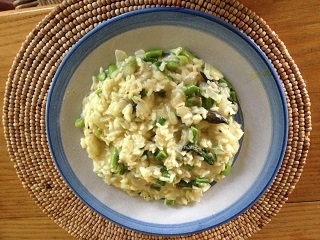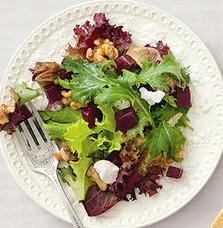Recipes
You may notice that most of our recipes use fresh goat cheese. A few are top-dressed with wedges of ripened chévres—Sofia, Piper's Pyramide, Flora, and Wabash Cannonball—and several use our aged chévres in gratinéed and “melting” recipes.
This reflects my strong opinion that cheeses like O'Banon and ripened chévres do not deserve to be whipped into a sauce or base with other ingredients. Their flavor, and the complexity of their rinds, make them solo cheeses, and they are best served as the stars of a cheese tray. For me, removing the leaves on a delicate O'Banon and mixing it into a risotto would be a waste of a beautiful and complex little cheese, especially since fresh chévre is a perfect replacement that adds a totally unique dimension to a multitude of recipes and ingredients. It's also more cost effective.
Fresh chévre not only adds a unique flavor dimension to dishes, it adds texture and an airy lightness as well. Its loft comes from delicate handling in the initial stages of cheesemaking, yielding a very light, soft curd. It also comes from the nature of goat milk itself, which has much finer fat molecules than cow milk. Lower in fat than a cream cheese, which it so often replaces as an ingredient, fresh goat cheese does not melt. If it's not overworked as an ingredient, the texture will contribute to the lightness of almost any recipe— without the additional calories.
There are 4 beet recipes in collection, and I would love to have more. I especially love the earthiness of beets with the light, citrusy brightness of fresh chevre.
In Jitterbug Perfume, Tom Robbins says, “The beet is the most intense of vegetables. The radish, admittedly, is more feverish, but the fire of the radish is a cold fire, the fire of discontent not of passion. Tomatoes are lusty enough, yet there runs through tomatoes an undercurrent of frivolity. Beets are deadly serious.”
Fresh chevre adds the frivoilty.
—Judy Schad
The Cheese Shop of Portland’s Goat Cheesecake
Perfect Grilled Cheese with Apples and Carmelized Onions
Sofia with Sungold Tomatoes, Bacon, & Manadori Balsalmico
Prairie Grass Cafe’s Beets, Plums, and Fresh or Aged Goat Cheese
Benedictine Spread with Fresh Goat Cheese
Rosemary, Apple, and Fresh Goat Cheese Crostini
Easter Frittata with Asparagus and Goat Cheese
Fresh Pea and Capriole Goat Cheese Tartines with Summer Vegetables
Beet Deviled Eggs with Asparagus and Goat Cheese
Goat Cheese Bruschetta With Mushrooms and Balsalmic Reduction
Roasted Beet and Onion Salad with Wabash Cannonballs
Roasted Beet and Fresh Goat Cheese Terrine
Summer Melon Salad with Capriole Fresh Cheese
Pumpkin and Fresh Goat Cheese Soup in Pumpkin Shell
Dean Corbett's Bisque with Old Kentucky Tomme
Goat Cheese Grits with Fresh Corn
Creamy Asparagus and Goat Cheese Risotto
Spinach and Fresh Goat Cheese Tart
Sweet Potato Latkes with Apples and Fresh Goat Cheese
Mac with Goat Cheeses and Tomato Sauce
Linguine with Fresh Goat Cheese and Spinach Pesto
Katie's Crab Cakes with Fresh Goat Cheese
Broiled Peaches with Fresh Goat Cheese and Bourbon
Grilled Figs with Wabash Cannonball, Country Ham, and Rosemary Syrup
Gale Gand's Goat Cheese Panna Cotta
Apple Clafouti with Fresh Goat Cheese
Charlotte Russe with Goat Cheese and Berry Puree
Squash Blossom/Fresh Goat Cheese Tempura
